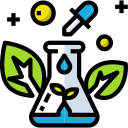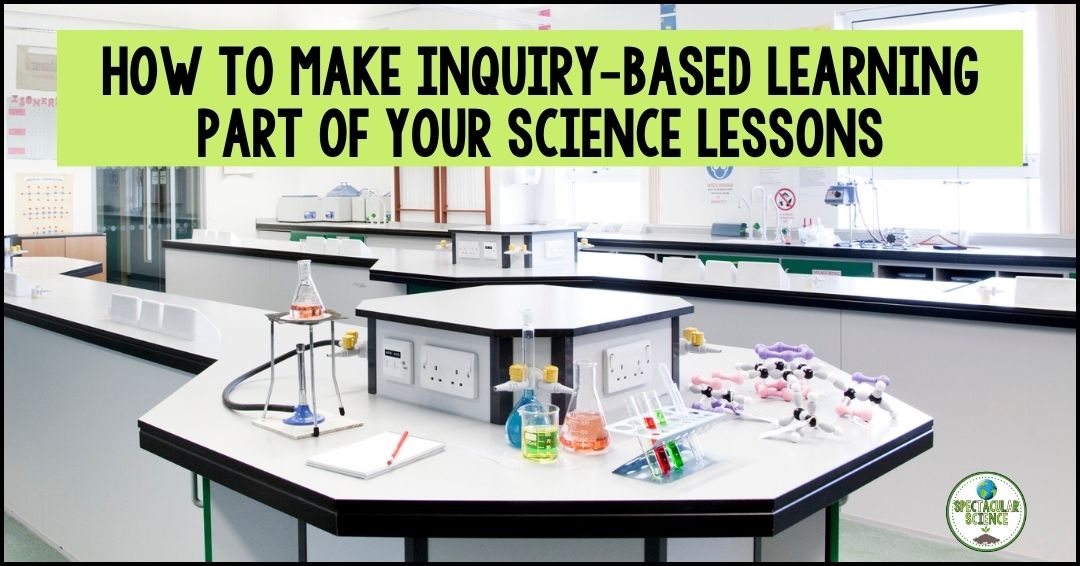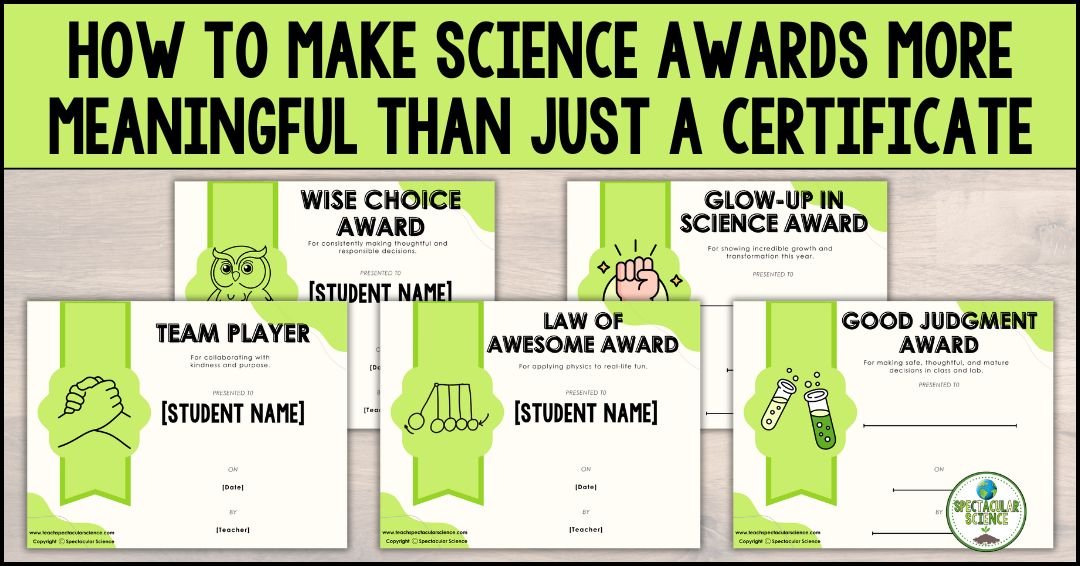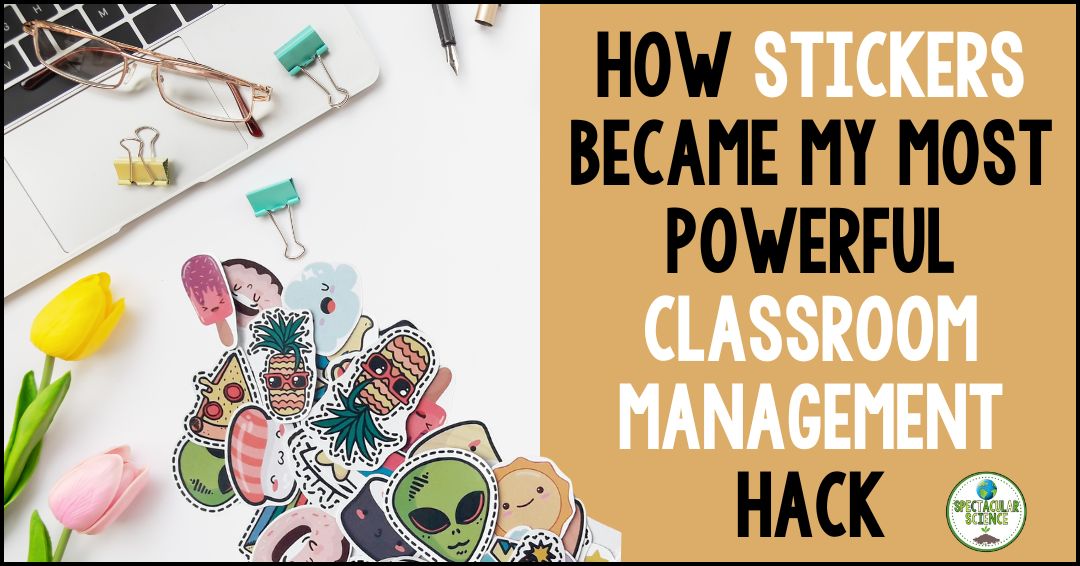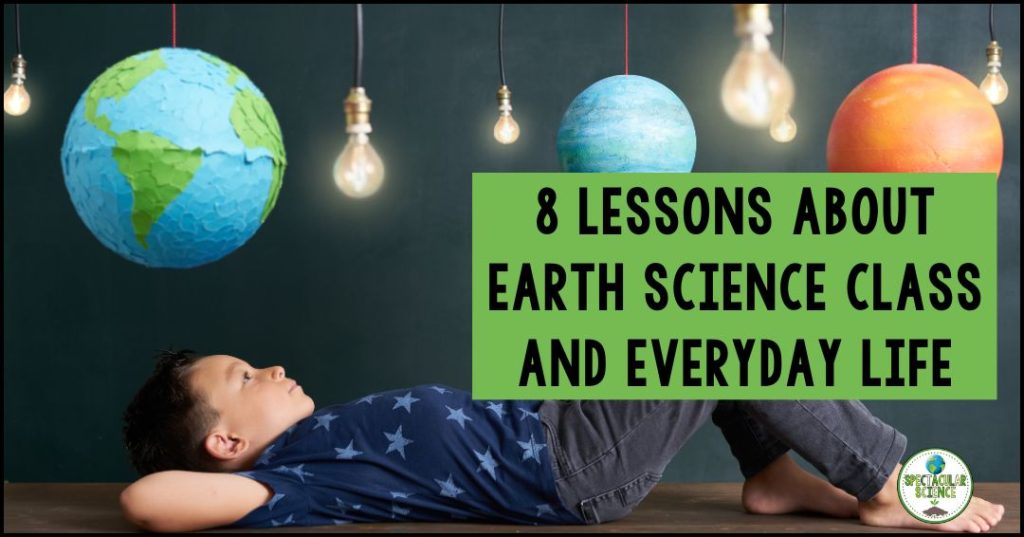
As teachers, we often talk about how to make lessons more relevant to our students. The goal is to make connections between any lesson and everyday life to increase student engagement while sharing knowledge and teaching skills. With Earth Science classes in middle school or high school, there are a variety of ways to make this a reality!
One subject that often captivates students’ curiosity and encourages a deeper understanding of the world around them is Earth Science. From the geological forces shaping our landscapes to the atmospheric processes influencing our weather, Earth Science is not (and should not be) just confined to textbooks and classrooms.
Here are 8 practical applications and real-world examples of Earth Science to make the subject come alive in the minds of students in your science classrooms.
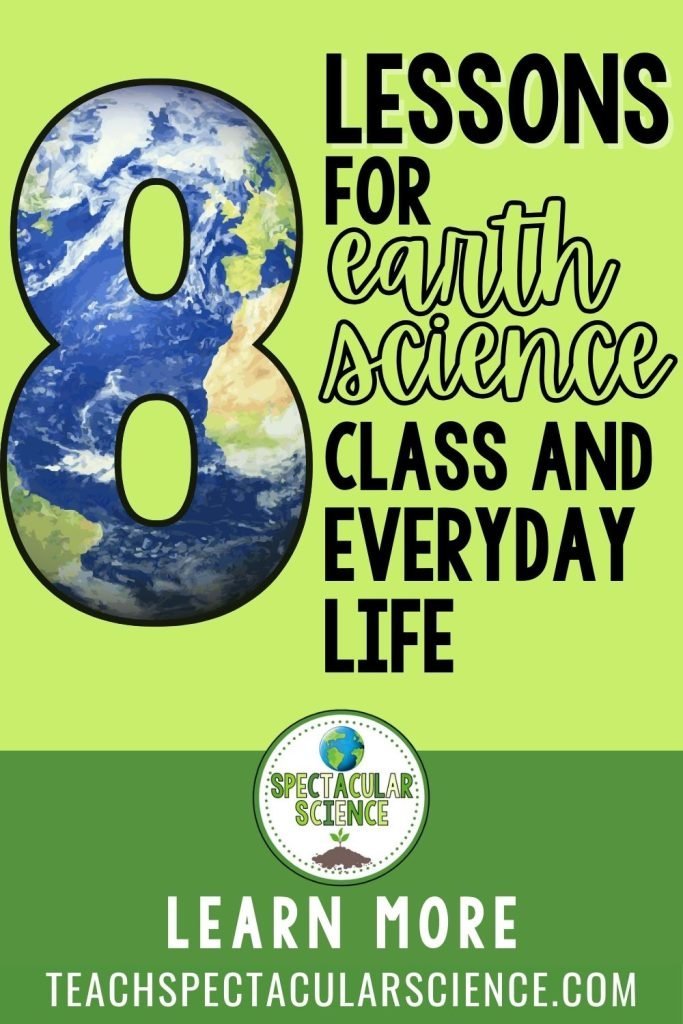
Making Connections Between Earth Science and Everyday Life
These eight lesson ideas along with suggested resources can be used within the assigned unit where you’re covering the required curriculum. These ideas are also a great addition to your end-of-year plans when you’ve finished the curriculum but still have time. Use these ideas as a way to make some final ties between Earth Science subject material and student interests. This could be a way to encourage students’ curiosity by encouraging student voice and choice (read more about inquiry-based learning here) or even getting them to take on some project-based learning (read about PBL here).
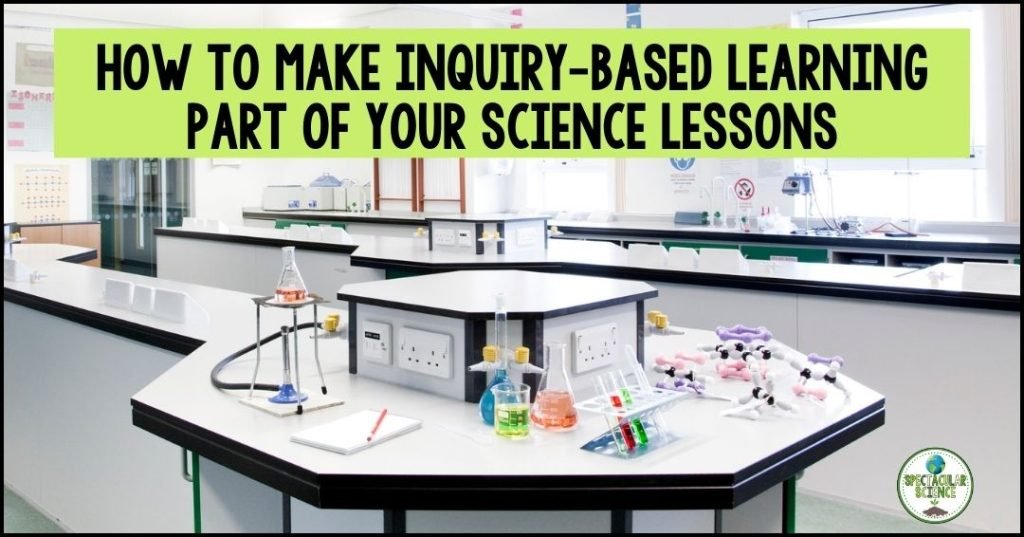
Geology in Construction
Earth Science is the cornerstone of understanding the materials that make up our planet. In construction, knowledge of geology is indispensable. Teachers can engage students by discussing how geological surveys inform the choice of building materials in different regions. For example, the durability of structures can be linked to the geological composition of the soil, and the types of rocks prevalent in an area can influence architectural styles.
There are lots of ways to connect these ideas to your community.
- Explore the architectural styles common to your area and research the geological composition of local land to see what correlations might exist.
- Invite an architect or someone in the construction industry into your classroom to discuss the how and why of decision-making for building locally.
- Create a classroom challenge to build a structure with varied materials and have students use different geological compositions as a base. Evaluate the structures using a co-created set of criteria.
Meteorology and Agriculture
Meteorology, a vital branch of Earth Science, has direct implications for agriculture. Understanding meteorological principles can empower students to appreciate the delicate balance between weather conditions and agricultural productivity. Illustrate this connection by explaining how weather patterns, precipitation, and temperature fluctuations impact crop growth.
Real-world examples could include
- discussions on the effects of droughts, hurricanes, or seasonal changes on farming practices,
- an examination of specific crops – their history, growing patterns, etc. with an additional focus on pricing and availability in grocery stores (make it a field trip!).
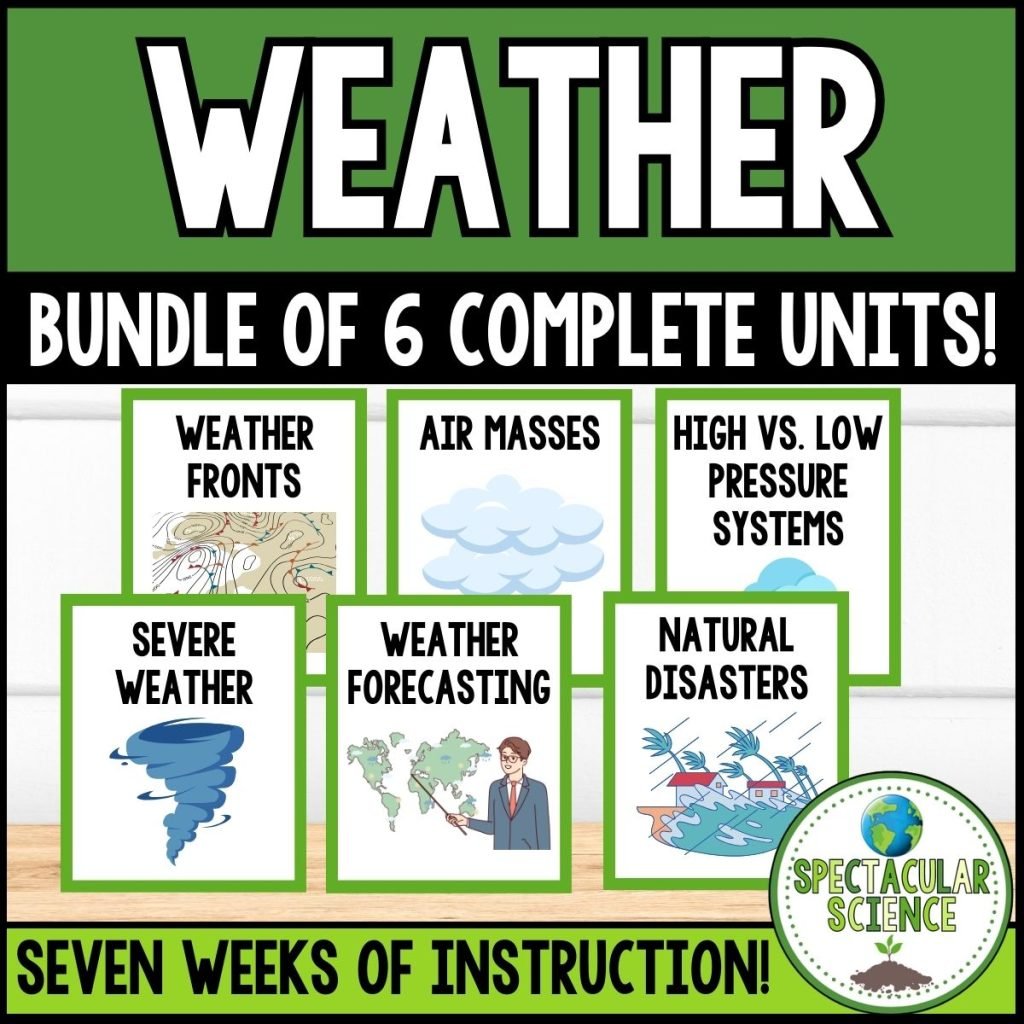
Elevate your science curriculum and captivate your students with this comprehensive Weather Unit Bundle—an essential resource thoughtfully designed for educators, both seasoned and new.
Grab a free severe weather project for your classroom now! This differentiated assignment encourages student-choice in the classroom and provides them with a true sense of autonomy. 17 options are provided for students to choose from in addition to a detailed rubric.

Oceanography and Climate Change
With the growing concern about climate change, incorporating oceanography into the curriculum is essential. Real-world examples, such as the rise in sea temperatures affecting marine life or the acidification of oceans due to increased carbon dioxide levels, will lead students to grasp the tangible effects of climate change on the planet.
Consider including lessons about the role of oceans in climate regulation, the impact of melting ice caps on sea levels, or the consequences for coastal communities.
This FREE no-prep Ocean Zones Brochure Project will challenge students to craft a visually captivating brochure to entice potential travelers to explore their chosen ocean environment. More than that though the students delve into the diverse ecosystems, unique organisms, and potential hazards of their selected zones.
Environmental Science in Urban Planning
Urbanization is a global trend, and understanding environmental science is crucial for sustainable urban planning. Real-world examples to explore can include the effects of urban heat islands or the importance of preserving natural habitats within urban environments.
Teachers can delve into topics such as waste management, air quality, and green spaces to demonstrate how Earth Science principles contribute to creating healthier and more sustainable cities.
Introduce the concept of urban sprawl with this presentation that includes guided notes for students. Then build on this knowledge with labs such as this one about unlocking the hidden value of trees or this one about understanding urban sprawl through mapping.
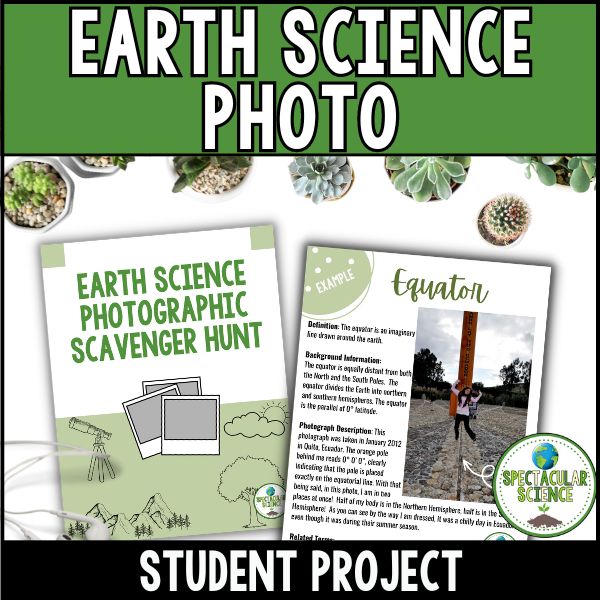
You could do a local walking tour so students can complete this Earth Science Photographic Scavenger Hunt Project. This project immerses students in the outdoors where they become Earth Scientists who can directly connect their theoretical knowledge with real-world observations.
Hydrology and Water Management
Access and availability of water is a hot topic! Whether it’s watershed management, the water cycle, or the impact of human activities on local water sources, real-world examples can make this topic ‘real’ for students.
Examine the consequences of urbanization on water quality, the importance of wetlands in flood prevention, and/or the challenges of ensuring clean water availability in various regions.
A virtual field trip is a great option to explore the world beyond your classroom without actually leaving your classroom! This virtual field trip all about Aquatic Biomes provides an engaging and visually stunning exploration of diverse aquatic environments such as the depths of the Amazon River, the pristine waters of Lake Baikal in Russia, the complex ecosystems of the Chesapeake Bay Estuary, and the unique marine life around the Galapagos Islands. Students will foster a deeper understanding of the intricacies that shape each biome.
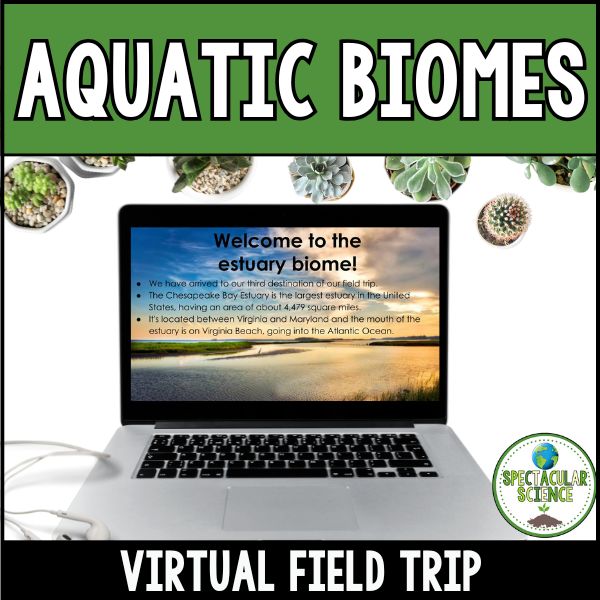
Seismology and Civil Engineering
Seismology – the study of earthquakes – is a fascinating aspect of Earth Science with direct relevance to civil engineering, which deals with all things related to the physical and naturally built environment. This includes roads, bridges, railways, airports, pipelines, etc.
Captivate students by exploring how engineers design structures to withstand seismic activity.
Real-world examples, such as earthquake-resistant buildings in regions prone to tectonic activity, can highlight the practical applications of Earth Science in ensuring the safety and resilience of infrastructure. Make this a hands-on activity with students building what they believe might withstand seismic activity and testing those structures.
For more ideas about incorporating earthquakes and real-life activities into your Earth Science classes check out these resources about different aspects of earthquakes. Some of the resources that teachers love are this full unit plan, this virtual field trip, and this earthquake research project.

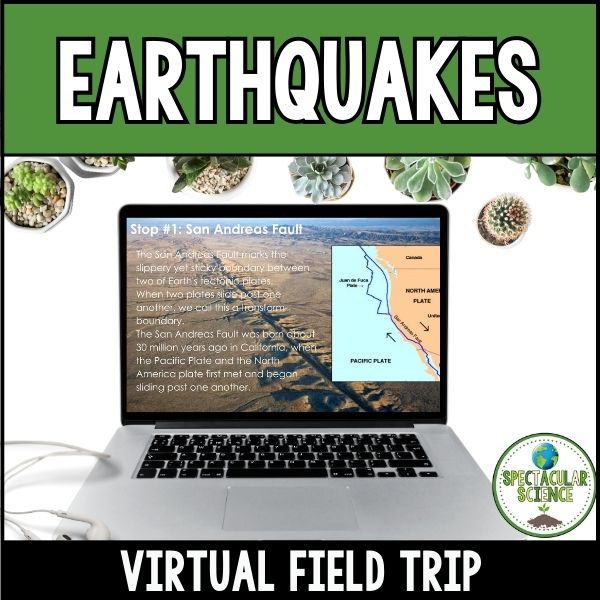

Atmospheric Science and Renewable Energy
Linking atmospheric science to renewable energy sources can make Earth Science more tangible for students. Teachers can delve into how wind patterns influence wind energy, the role of sunlight in solar power, and the impact of climate conditions on renewable energy efficiency.
Talk sustainability through real-world examples, such as wind farms in windy regions or the use of solar energy in sun-rich areas. These can demonstrate the practical applications of Earth Science in the quest for sustainable energy solutions.
Read more about teaching sustainability in this post.

Volcanology and Tourism
Volcanic landscapes often attract tourists and they’ll also attract your students. This is a fascinating subject with real-world connections that teachers can explore in Earth Science class.
- Examine how volcanic activity shapes the topography and leads to the formation of tourist destinations like hot springs and volcanic craters.
- Research the different hot springs and volcanic craters such as those in Colorado, or further afield in Costa Rica, Iceland, Japan, and more.
- Discuss the economic impact of volcanic tourism on local communities.
- Explore the importance of monitoring volcanic activity for public safety.
This virtual volcano field trip is one that teachers repeatedly their students LOVE! Through this activity students delve into the aftermath of the largest volcanic eruption in recorded history, exploring its impact on the landscape and surrounding communities.
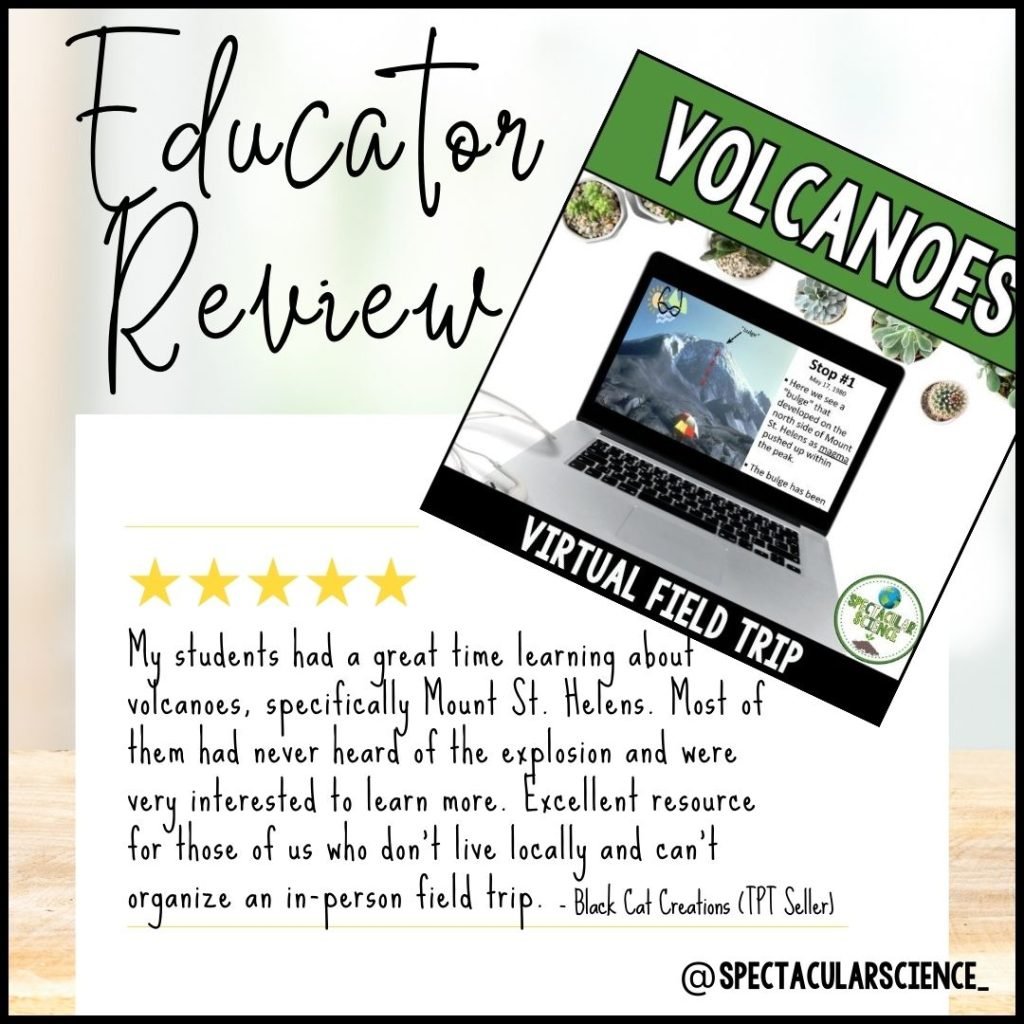
Earth Science is not just a subject in a textbook but a dynamic force shaping our daily lives. As educators, we play a crucial role in shaping the minds of future generations so let’s inspire the next generation of scientists, engineers, and environmentally conscious citizens by unveiling the secrets of Earth Science in the world around us.

